DIRECTED BY: Clarence Brown
STARRING: Greta Garbo, John Gilbert, Lewis Stone
NOMINATED FOR: Best Writing, Achievement (Bess Meredyth)
"In the old silent days, [William H.] Daniels had been the best of them all. His camera work was so close to art that producers and directors and cameramen used to sit in private projection rooms, not to judge a picture, but to see what new tricks of lighting and effects Daniels had achieved. The industry acknowledged that Daniels' work was so fine that other cameramen were never censured for shamelessly stealing it".
-Mark Hellinger, producer
Every year, when the Academy Awards role around, there's always something to complain about. How in the world did such-and-such get nominated? Why was this nominated over that? Why was this aspect of the film nominated but not this aspect? These strange choices, the result of both ballot voting and inner-politics, have been consistent with the Academy since the beginning, and A Woman of Affairs is an early example of it.
The film was nominated for it's writing, but it's story is muddled, it's dialogue is over-dramatic, and it's pace is uneven.
The film was NOT nominated for it's cinematography, even though it has some great dramatic lighting, it uses it's space well, and its tracking shots are mind blowing for a film this old.
Cinematographer William H. Daniels was been nominated four times for his work, winning once. He made over 150 films from the 20s to the 60s. Bess Meredyth wrote some Zorro movies. Ok, maybe I'm being disingenuous, one's success does not directly reflect one's quality and character, but seeing a film praised for it's weakest quality and having it's strongest quality ignored just seems so typical of the Academy these days.
This is the film's opening shot:

Our main character, Diana Merrick, goes all CRAZY WOMAN DRIVER and haphazardly drives her car into puddles, avoiding other drivers by a fraction of an inch, and finally nearly decapitating half a dozen road workers.
It's a typical screwball comedy gag, and it's high energy suggests we're in for a wild and zany ride! Problem is, this scene is in no way related with the rest of the movie. Nowhere else in the film do we get off-the-wall physical comedy or any general goofiness. It's not even consistent with the character. We see Diana drive several times after this scene, and she does so safely and calmly.
It's almost as if they started writing one film and suddenly changed their minds. This isn't the first time we'll have this type of shift of tone, but it is the most jarring.
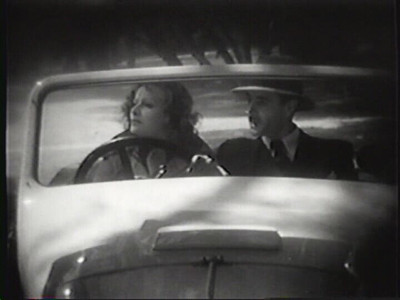
So, now that those meaningless gags are out of the way, it's storytime. Diana is a young British aristocrat in love with slightly-less aristocratic Neville Holderness. Through flashback, we see that they've known each since childhood, and Diana, still an overgrown child, clings to the "strong male sweeps her away" fantasy of her youth, and Neville thinks she's cute, so hey, win-win.
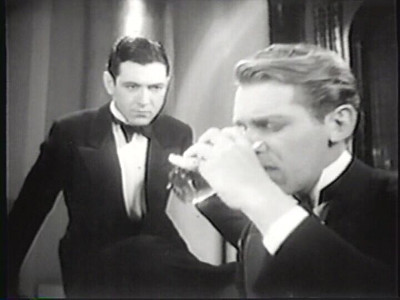
Meanwhile, Diana's brother Jeffry (right) drinks away his sorrows (though what those sorrows are, we never find out) while his best friend David Furness (left) tries to talk him out of the booze.
Neither of these two are well-written characters. Jeffry does two things throughout the film: mope around and act angry for no defined reason, and show a damn-near homosexual amount of admiration to David. David's role in the film is simply to react to Jeffry. Both these characters are empty shells that simply offer plot devices when the story needs them to.
So, after some short meaningless scenes of Jeffry and Diana fighting and then making up, we cut to the next day, where we're introduced to two more characters. First, Dr. Hugh Trevelyan:

An old friend of Diana and Jeffry. HE'S NICE!
And then there's Sir Morton Holderness:
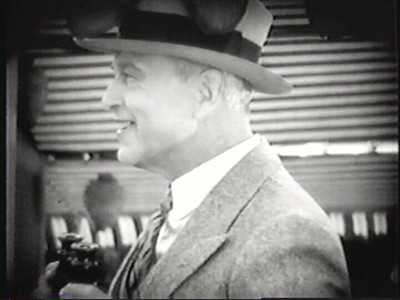
Neville's father. HE'S NOT SO NICE!
In case you couldn't tell already, the biggest flaw in this film is that the characters are totally depthless with one possible exception, but we won't meet her till much later in the film. All these characters do is allow the plot to move forward, and we never spend anytime learning their reasons for doing these things.
So, Diana and Neville talk for a bit, and we learn that Diana is richer then Neville, and Neville, with his outdated masculinity, can't stand the idea of her supporting him. He suggests the idea of him leaving for a few years to start business in Egypt, but is only deterred when Diana threatens to leave him.
I really need to point out there is no dramatic difference between Diana's and Neville's fortunes. I mean, look at Neville's house!
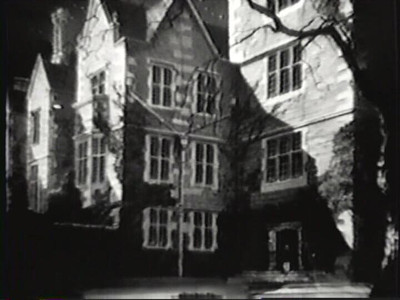

TWO PEOPLE LIVE IN THIS HOUSE! This isn't some fish-out-of-water love relationship, this is a story about a guy who feels less like a man because he has ten million dollars and she has eleven million. This film is "the rich and restless," and who wants to watch that? Sorry guys, I'd love to hear about your petty struggles, but I gotta go work at WAL-MART!
Anyway, Neville does end up going to Egypt after a long off-screen talk with his father, who acts as the makeshift villain in this film. Diana learns of this, and as an act of petty revenge, marries Jeffry's friend David instead.
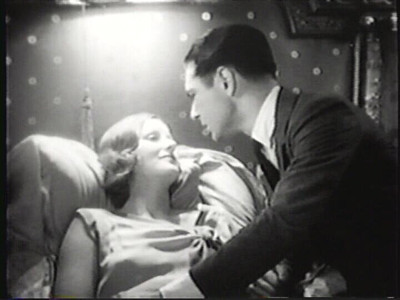
Of course, Diana doesn't love David, but David is too blissful to be aware of these. In any case, David has other things to worry about, because on their honeymoon, there's a mysterious knock at the door.
Up to this point, the cinematography is pretty standard, but this moment, which also acts as a tonal shift in the film, is when it really starts to shine. David, with an expression of total terror on his face, slowly approaches the door, and we follow him with a long, tension-building tracking shot through two rooms.
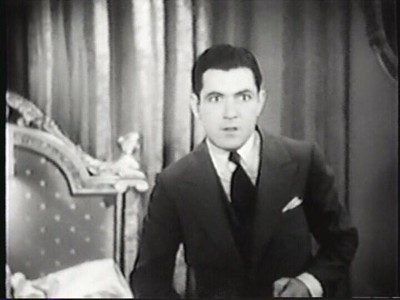
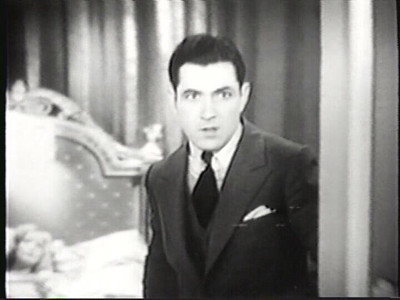
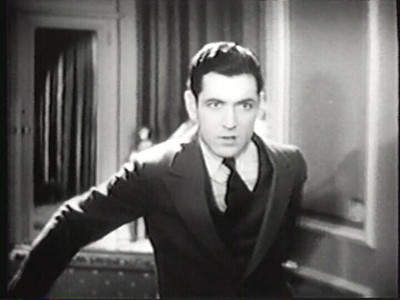
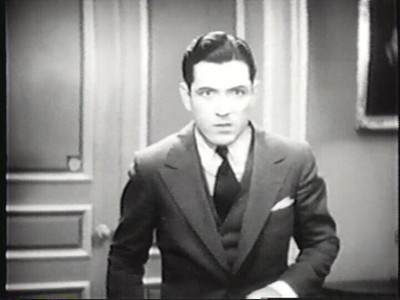
This is the first of nearly a dozen tracking shots in the film, and they're all done really, really well, and brings forth the main theme in the cinematography: these people live in empty space, which could reflect the emptiness in each of the characters if I believed the film was trying to be that deep.
Later, the film seems to switch to more natural lighting and frames the characters from far away, allowing the characters to get lost in dark voids. Take these shots from later in the film for example:
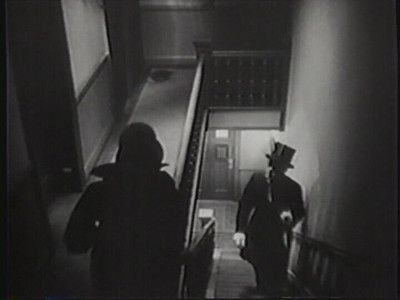

One scene much later in the film takes place in a hospital, which is brightly lit, but the empty space is still overwhelming.

This emptiness is made even more pronounced by how far apart the characters are from each other.
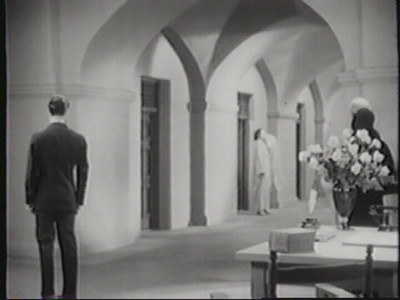
There's a lot of shots I could analysis for you, but these are the basic tricks used throughout the second half of the film, and they really give the film a much-needed flavor boost. There really isn't much more to add to that: The story is pointless and shallow and the cinematography makes me giddy. End review.
But wait, who was knocking on the door? Will Diana and Neville get back together? I'll leave that for you to find out, because you can watch A Woman of Affairs on Youtube HERE.

2 comments:
What a fun review! thanks
and, actually, my name is ken . . not joe. it seems as if i was "assigned" the moniker, Joe.
nonetheless; i really did enjoy you take on the film, "A Woman of Affairs." thanks again.
Post a Comment